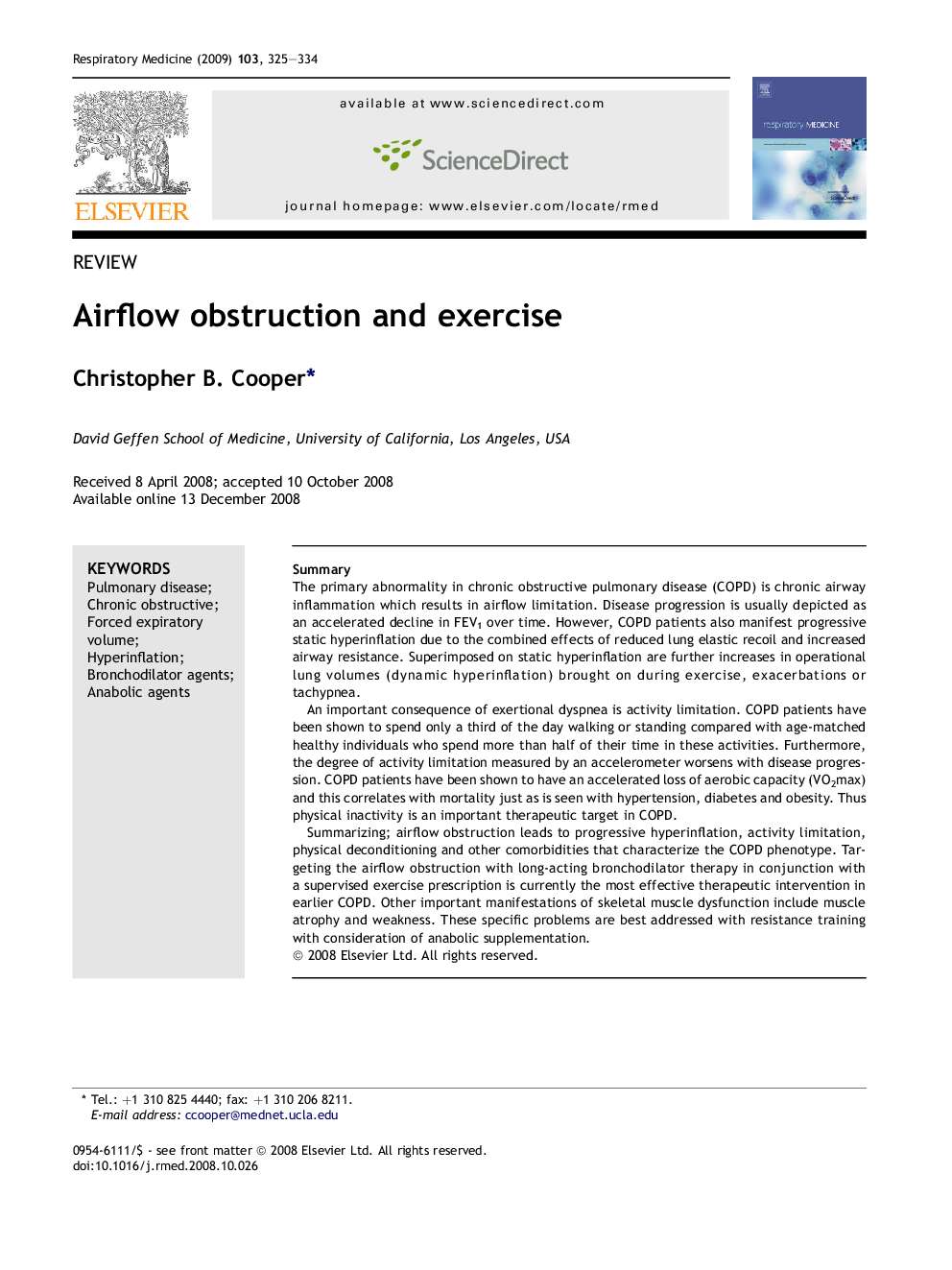| Article ID | Journal | Published Year | Pages | File Type |
|---|---|---|---|---|
| 4211143 | Respiratory Medicine | 2009 | 10 Pages |
SummaryThe primary abnormality in chronic obstructive pulmonary disease (COPD) is chronic airway inflammation which results in airflow limitation. Disease progression is usually depicted as an accelerated decline in FEV1 over time. However, COPD patients also manifest progressive static hyperinflation due to the combined effects of reduced lung elastic recoil and increased airway resistance. Superimposed on static hyperinflation are further increases in operational lung volumes (dynamic hyperinflation) brought on during exercise, exacerbations or tachypnea.An important consequence of exertional dyspnea is activity limitation. COPD patients have been shown to spend only a third of the day walking or standing compared with age-matched healthy individuals who spend more than half of their time in these activities. Furthermore, the degree of activity limitation measured by an accelerometer worsens with disease progression. COPD patients have been shown to have an accelerated loss of aerobic capacity (VO2max) and this correlates with mortality just as is seen with hypertension, diabetes and obesity. Thus physical inactivity is an important therapeutic target in COPD.Summarizing; airflow obstruction leads to progressive hyperinflation, activity limitation, physical deconditioning and other comorbidities that characterize the COPD phenotype. Targeting the airflow obstruction with long-acting bronchodilator therapy in conjunction with a supervised exercise prescription is currently the most effective therapeutic intervention in earlier COPD. Other important manifestations of skeletal muscle dysfunction include muscle atrophy and weakness. These specific problems are best addressed with resistance training with consideration of anabolic supplementation.
